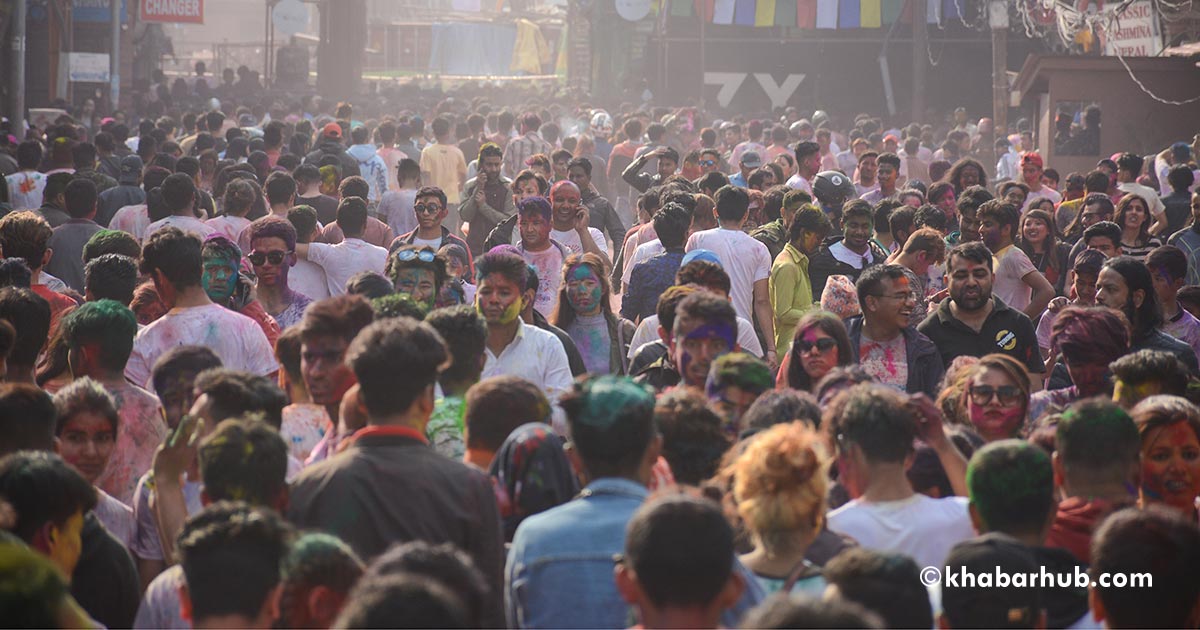KATHMANDU: Fagu Poornima or Holi, the festival of colors, is being observed with much fanfare in hilly areas, including the capital city, today and tomorrow in the Terai region.
The festival, also called the Spring festival, marks the arrival of spring and the harvest season. The first day of the festival is called Chhoti Holi or Holika Dahan and the second-day Dhuleti or Holi.
Holika Dahan, the death of Holika, the symbol of the triumph of good over evil, is marked by lighting a bonfire, and performing a special Puja to burn evil spirits.
The next day, people enjoy smearing one another with different colors including Abir or red vermilion powder. However, this year coronavirus fear has taken its toll on the festival as the government has requested Holi celebrators to abstain in view of the coronavirus.
Among various cultural festivals celebrated in Nepal, the Fagu Poornima carries its own specialty and significance.
People from old to young age enjoy the festival with enthusiasm. One of the widely observed festivals of the country, the festival begins on the eighth day of the new moon and ends with the burning of the ‘Chir’, which was installed earlier, on the full moon day later today.
According to a Hindu myth, demon king Hiranyakashyapu, who was unhappy with his son Prahlad for his wholehearted devotion to the God Bishnu, ordered his sister Holika to kill Prahalad.
Following her brother’s instruction, Holika, who had a boon from the god that fire would not harm her, sat on fire with Prahlad on her lap but was burnt to death while Prahalad remained unhurt due to the blessing of God Bishnu.
From then onwards, the festival also known as Holi is celebrated by smearing color with enjoyment. There is also a saying that Lord Bishnu had told Holika that the boon she had received would be meaningless if it was misused.
Senior people believe that any premonitions can be avoided if “Tika” made from the ashes of the ‘Chir’ is put on one’s forehead or kept in the house.









Comment